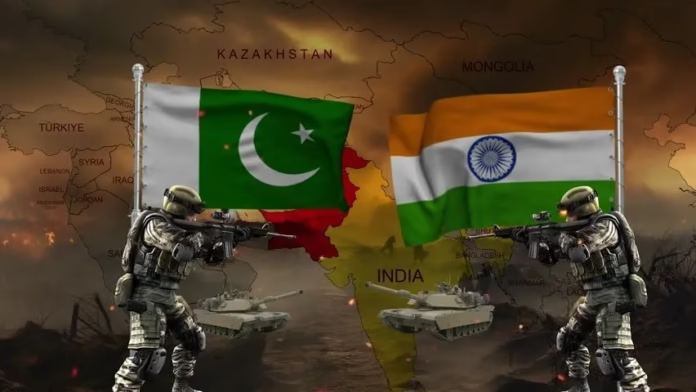Introduction: More People, Less Water
The Indus River is more than a geographical feature it’s a geopolitical powder keg in the making. As India, now the most populous country on Earth, continues to experience rapid population growth, the pressure on its natural resources intensifies. While this demographic expansion is often seen as an engine of economic power, it comes with a steep price: food security.
With climate change disrupting global rainfall patterns and threatening agricultural stability, India must secure not only fertile land but also a reliable water supply. And herein lies the looming flashpoint: the Indus River. Flowing from Tibet through India and into Pakistan, it’s not just a river it’s a lifeline for millions. As India’s demand grows, so does the temptation to control more of its waters, even at the risk of igniting regional tensions with Pakistan.
A River That Feeds Nations
The Indus River system is one of the largest irrigation systems in the world. Over 90% of Pakistan’s agriculture is dependent on it. In contrast, only a portion of India’s agriculture relies on the Indus waters, but as Indian population and food demand soar, that reliance is likely to increase dramatically.

Water, after all, is not just about drinking or sanitation it’s the key to agricultural productivity. And in a country like India, where feeding 1.4 billion people is becoming a logistical nightmare, water equals power.
The Silent Pressure: Climate Change
The entire region is increasingly vulnerable to climate-induced water scarcity. Unpredictable monsoons, melting Himalayan glaciers, and prolonged droughts have made rainfall less reliable than ever. With reduced snowpack feeding rivers and increasing seasonal variability, water from the Indus is no longer a guaranteed resource it’s becoming a contested prize.
India, already under pressure to feed more mouths and sustain its agricultural economy, may soon view the Indus as a necessary acquisition to ensure national food security.
Climate impact on Himalayan glaciers (Nature Climate Change)
Why India Might Push to Control the Indus
Under the Indus Waters Treaty (1960), India and Pakistan agreed to share the river system: India has rights over the eastern rivers (Ravi, Beas, Sutlej), and Pakistan controls the western ones (Indus, Jhelum, Chenab). However, the treaty was based on older demographic and environmental realities.

Today, India’s need has changed. Analysts believe that as internal water stress escalates, India may seek to renegotiate or even unilaterally alter its use of western rivers those meant for Pakistan.
Such a move would be seen by Pakistan as an existential threat.
The Indus Waters Treaty 1960, United Nations Treaty Collection
Water Scarcity: A Trigger for War?
This isn’t just political tension it’s a matter of survival.
If Pakistan perceives Indian interference with Indus waters as an attempt to “starve” its population, the reaction is unlikely to be diplomatic. The deprivation of water resources can easily be interpreted as a form of slow annihilation an attack on the very foundation of a nation’s existence.
And when a nation’s survival is threatened, history shows us it fights back with everything it has.
India’s water crisis explained (Al Jazeera)
Kashmir Is Symbolic. Water Is Strategic.
While Kashmir has long been a source of conflict between India and Pakistan, its symbolism is more emotional and historical. The Indus, by contrast, cuts to the core of both nations’ national security.
Control of water equates to control over agriculture, which in turn feeds into economic stability and domestic peace. Starving a country of its food supply is a surefire recipe for chaos. That’s why water disputes have the potential to ignite a far deadlier confrontation than the one seen over Kashmir.
What’s at Stake?
- Food security for two nuclear-armed nations.
- The stability of over 300 million people living along the Indus basin.
- A delicate geopolitical balance held together by an aging treaty.
- The risk of triggering a resource-based war in a region that could impact the entire world.
A Crisis That Demands Urgent Diplomacy
The international community cannot afford to ignore the writing on the wall. Both India and Pakistan need updated water-sharing mechanisms, cooperative climate adaptation strategies, and investment in water efficiency technologies.
Without such measures, the world could soon witness the first major water war of the 21st century.
Conclusion: The Flow That Shapes the Future
In an era where climate shocks are becoming more intense and frequent, and where national survival is increasingly linked to natural resources, water is no longer just a domestic issue it’s a geostrategic asset.
For India, controlling more water may seem like a solution. For Pakistan, it could mean devastation. Unless a new vision for shared survival is forged soon, the Indus River may become a battlefield, not a blessing.
Stay informed. Follow Curialo to understand how climate, politics, and power intersect in the most unpredictable ways.


